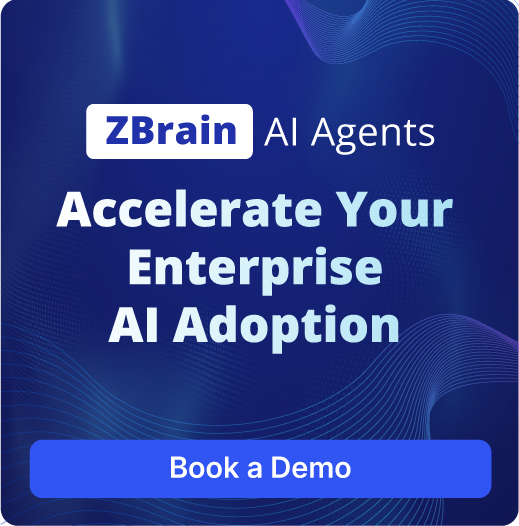
 Live
LiveInterview Question Generator Agent
Generates tailored interview questions, enhancing recruitment and pinpointing ideal candidates more efficiently.

 Live
LiveEmail Acknowledgment Agent
Automates candidate email responses, improving recruitment speed and communication efficiency in talent acquisition.

 Live
LiveResume Screening Agent
Efficiently screens resumes using pre-set criteria, helping HR swiftly identify top candidates for job openings.

 Live
LiveInterview Question Generator Agent
Generates tailored interview questions, enhancing recruitment and pinpointing ideal candidates more efficiently.

 Live
LiveEmail Acknowledgment Agent
Automates candidate email responses, improving recruitment speed and communication efficiency in talent acquisition.

 Live
LiveResume Screening Agent
Efficiently screens resumes using pre-set criteria, helping HR swiftly identify top candidates for job openings.
Streamline Recruitment and Staffing Tasks with ZBrain AI Agents
ZBrain AI Agents for Recruitment and Staffing optimize HR operations by automating critical processes such as Resume Screening, Email Acknowledgment, and Interview coordination. These AI-driven agents enhance the hiring pipeline's efficiency and precision, enabling HR professionals to focus on strategic talent acquisition rather than getting bogged down by repetitive tasks. By leveraging ZBrain AI agents, recruitment teams can swiftly filter through large volumes of resumes to identify the most suitable candidates, ensuring a pool of high-quality applicants is readily available. Additionally, automated email acknowledgments keep candidates informed and engaged throughout the hiring process, fostering a positive candidate experience from the very first interaction. The advanced capabilities of ZBrain AI Agents transform traditional HR operations into streamlined and responsive workflows. By facilitating interview scheduling and coordination, these AI agents ensure a seamless and efficient interview process, significantly reducing time-to-hire and enhancing overall productivity. Designed to support diverse recruitment needs, ZBrain AI Agents for Recruitment and Staffing empower HR departments to seamlessly integrate AI into their daily operations, driving better outcomes and positioning organizations for success in a competitive talent market. With these intelligent agents, HR teams can maintain a strategic focus on building robust, high-performing teams without sacrificing quality or speed in the recruitment process.

